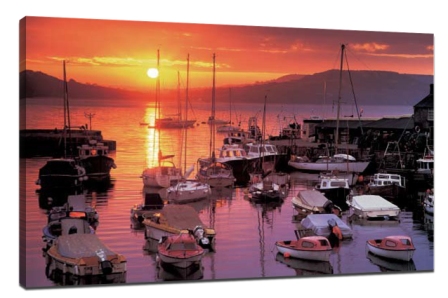5 simple steps to take beautiful scenery Photo
5 simple steps to take beautiful scenery Photo
Making full use of the golden shooting time.
When the sun is very high, its light is very intense, but the closer it is to the horizon, the warmer the light becomes. Sometimes the best lighting conditions for landscape photography are the dawn and dusk of the day. The sun's rays after sunrise and before sunset add a warm color to the photo to achieve a low-contrast effect. Because the soft light allows the film and digital sensors to record all the details in the photo, it's good for taking those detailed scenes. Low Angle sunlight also produces soft projections that show the shape and texture of the earth. Changes in light during this short period of time have a profound effect on landscape photography. Take the time to go out in the heat of the sun to find the right spot, and then go back later or early in the morning the next day.
Use low Angle light
For landscape photography, there are magical moments before sunrise and after sunset, when soft light and color create a peaceful and relaxed atmosphere. On cloudy days, cool blue light can do the trick, but on cloudless days, colors range from yellow to fuchsia. Look for places with lakes, rivers, and beaches so that the color of the sky can be reflected by the water surface in the foreground of the photo. When shooting in the mountains, pay attention to the mountain glow, which can give the mountain a soft red glow. Because many modern cameras have electronic exposure systems that can only be set to 30 seconds at most, optometry is not accurate enough. That means you'll have to resort to old-fashioned exposure (using door B), using a shutter release and stopwatch. Exposure time can be extended to a few minutes, so having a sturdy tripod is important.
Keep a close eye on the sky
Sky is a very important factor in landscape photography. However, unless it adds a positive element to the picture or improves composition, do not take the picture. Because landscape photographers like to shoot in the morning and evening throughout the day to get the best light effect, we've seen some of the most spectacular skies - quickly changing, with sudden bursts of color and shifting light. It's important to keep a close eye on every change in the sky in order to catch every shot. Because the sky is generally brighter than the scenery itself or the foreground, you often need to use a medium-gray gradient filter to control contrast, otherwise the film will likely not be able to record enough detail. Polarizing mirrors can also be used to control contrast, making clouds appear prominent and saturated with color.
Prepare for the transient light
Some of the most memorable shots were taken when fleeting light was projected from a cloudy sky. Sometimes the best chance is at sunrise or sunset, a brief moment when the sun is close to the horizon, usually with spectacular, colored skies. The best way to record this transient light is to plan the shoot, choose a location beforehand, study the Angle of the light, and choose the composition. It is best to use a light meter, choose a place with sunlight in the lake area to measure light, determine the brightness level, set the light data on the camera, re-composition, take several pictures! This way, where there is sunlight, it will be properly exposed, and where there is no sunlight, it will be dimmed to capture the flash of light that initially strikes you in the scene.

Control glare
Adding light to your composition can dramatically improve the mood of your shot. Zoom lens is easier to generate glare, and use the prime lens if convenient. The optical surface of the image should be clean and stain free and use fewer filters. The hood may not be effective for eliminating glare if the composition contains the sun. Use your hands or a piece of cardboard to block the lens and place the camera on a tripod. When using a telephoto lens, use the shadow cast from a distance as much as possible, across the foreground of the image - the further away from the lens, the clearer the shadow line. If the sun is in the picture, try to hide it partly behind a tree or something similar. Try to avoid the sun affecting the elements in the foreground or affecting the filter you use.
Recent Posts
-
Affordable Large Canvas Prints: How to Find Cheap Canvas Prints Without Compromising on Quality
If you’ve ever thought about decorating your space with large canvas prints, you might have he …18th Feb 2025 -
Cheap Canvas Prints for Painting: Affordable Art Supplies for Every Artist
For artists, finding high-quality yet affordable materials is essential to fueling creativity withou …17th Feb 2025 -
Floating Frames for Canvas: Elevate Your Wall Art with Style
When it comes to displaying canvas art, the right frame can make all the difference. Floating frames …14th Feb 2025
